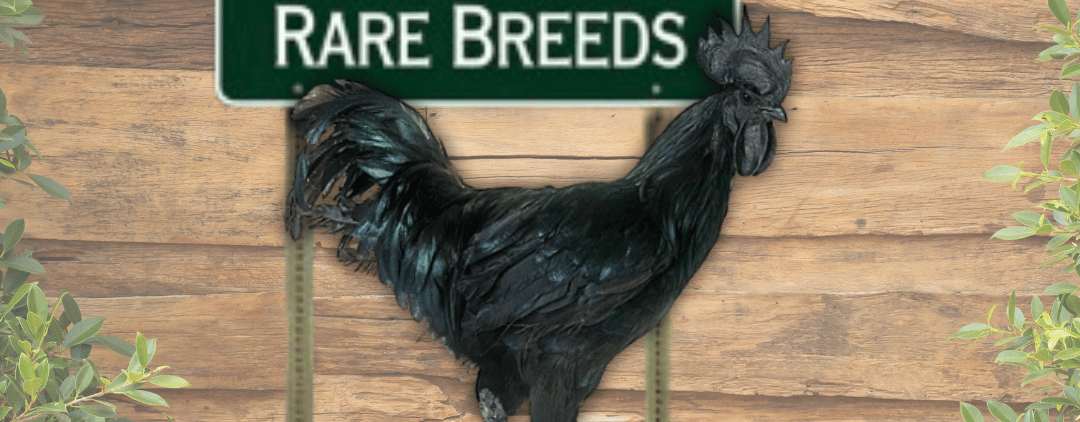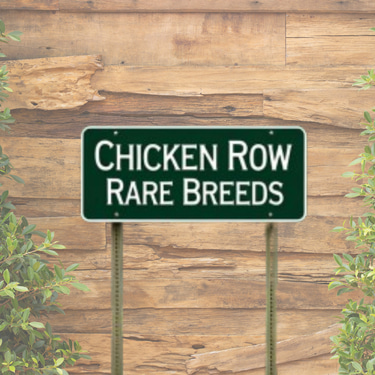Ayam Cemani
A rare Indonesian heritage breed with striking all-black beauty and mystique
8/22/20252 min read
Predict the future
You didn’t come this far to stop


🖤 Ayam Cemani: The All-Black Chicken of Indonesia
Mysterious, rare, and strikingly beautiful, the Ayam Cemani is often called the “Lamborghini of poultry.” With jet-black feathers, black beak, black skin, and even dark organs, this Indonesian breed has fascinated chicken keepers, collectors, and cultural historians alike. Its rarity and unique genetic trait make it one of the most sought-after chickens in the world.
📜 A Brief History
The Ayam Cemani originates from Java, Indonesia, where it has been known since at least the 12th century. Traditionally, it was valued not only as a chicken but also for its role in religious and mystical practices.
The name comes from the Indonesian word ayam (chicken) and the Javanese word cemani meaning “thoroughly black.”
The breed was described by Dutch colonial settlers and first imported into Europe in 1998 by breeder Jan Steverink. Today, Cemani can be found across Europe and the U.S., though they remain extremely rare.
📌 Breed Snapshot
Status: Rare, ornamental breed
Use: Ornamental, cultural, gamecock in Indonesia
Egg Production: 60–100 eggs per year
Egg Size & Color: Medium; tinted/cream/light blue
Weight: Roosters 4.4–5.5 lbs; Hens 3.3–4.4 lbs
Temperament: Skittish but can be somewhat friendly
Characteristics: Jet-black feathers, skin, and organs due to fibromelanosis
🐓 Why Choose an Ayam Cemani?
Unique Appearance
Cemani are famous for their all-black coloration — feathers, skin, wattles, combs, beaks, and even internal organs are darkened by fibromelanosis, a genetic condition that causes excess pigmentation.
Cultural Significance
In Indonesia, Cemani have been used for rituals and ceremonies for centuries. In Bali, they are also valued as gamecocks, prized for their muscular thighs and speed.
Exclusivity
Ayam Cemani are one of the most expensive chicken breeds in the world. Individual birds can cost thousands of dollars, making them a status symbol among collectors and enthusiasts.
🛠️ Care Considerations
Not a Production Bird – Hens lay only 60–100 eggs per year, and they are poor setters. They rarely raise their own chicks.
Temperament – While not aggressive, they can be skittish and shy. They are best for keepers with some poultry experience.
Space & Safety – Like other medium breeds, they do best with adequate free-range or secure run space.
Climate Adaptability – Cemani are fairly hardy but need protection from cold and wet conditions, as with other Mediterranean-type breeds.
🧬 Appearance at a Glance
Size
Roosters: 4.4–5.5 lbs
Hens: 3.3–4.4 lbs
Color
Feathers, skin, wattles, comb, beak, and organs: Black
Unique turquoise sheen visible on rooster neck and tail feathers
Eggs
Medium-sized, tinted to cream or light blue
Other Notes
Despite myths, their bones are not black and their blood is normal in color.
🧡 Heritage and Conservation
The Ayam Cemani is a rare breed on the international market, still bred in limited numbers in Europe, the U.S., and Indonesia. Conservation is important to preserve its unique genetic traits and cultural significance.
🧠 Final Thoughts
The Ayam Cemani is not a breed for egg or meat production — but that isn’t why people keep them. They are treasured for their mystique, rarity, and stunning black plumage. Whether admired as living art, valued for cultural traditions, or kept as an ornamental curiosity, the Ayam Cemani remains one of the most fascinating chicken breeds in the world.
